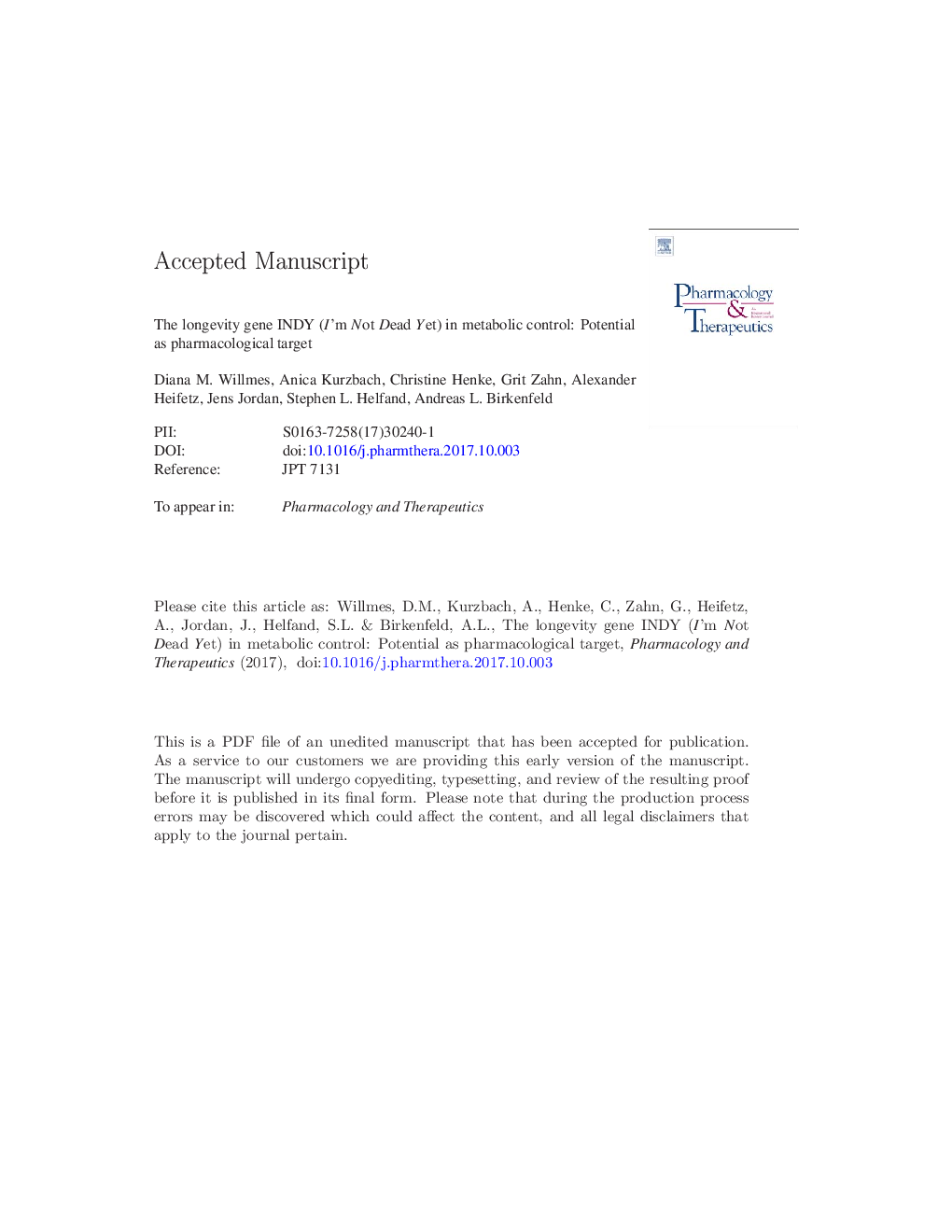| Article ID | Journal | Published Year | Pages | File Type |
|---|---|---|---|---|
| 8536832 | Pharmacology & Therapeutics | 2018 | 31 Pages |
Abstract
The regulation of metabolic processes by the Indy (Iâ²m Not Dead Yet) (SLC13A5/NaCT) gene was revealed through studies in Drosophila melanogaster and Caenorhabditis elegans. Reducing the expression of Indy in these species extended their life span by a mechanism resembling caloric restriction, without reducing food intake. In D. melanogaster, mutating the Indy gene reduced body fat content, insulin-like proteins and reactive oxygen species production. Subsequent studies indicated that Indy encodes a citrate transporter located on the cell plasma membrane. The transporter is highly expressed in the mammalian liver. We generated a mammalian knock out model deleting the mammalian homolog mIndy (SLC13A5). The knock out animals were protected from HFD induced obesity, fatty liver and insulin resistance. Moreover, we have shown that inducible and liver selective knock down of mIndy protects against the development of fatty liver and insulin resistance and that obese humans with type 2 diabetes and non-alcoholic fatty liver disease have increased levels of mIndy. Therefore, the transporter mINDY (NaCT) has been proposed to be an 'ideal target for the treatment of metabolic disease'. A small molecule inhibitor of the mINDY transporter has been generated, normalizing glucose levels and reducing fatty liver in a model of diet induced obese mice. Taken together, studies from lower organisms, mammals and humans suggest that mINDY (NaCT) is an attractive target for the treatment of metabolic disease.
Keywords
T2DMC. elegansHFDNASADIPO-IRCICSGACOAAMPKIGF-1PGC-1αNAFLDAGAOGTTCREBNEFAVLDLNaDCACLYATP citrate lyaseD. melanogasterFATPappropriate-for-gestational-ageEST databaseOAANACTSLC13A5HEK-293ASOINSmRNAIL-6AHRcAMP responsive element-binding proteinADMETCAFFAACCHepG25′AMP-activated protein kinasecAMPcDNAComplementary DNASmall interfering RNAsiRNAAdenosine TriphosphateATPCyclic adenosine monophosphateOral glucose tolerance testSTATacetyl coA carboxylaseoxaloacetic acidFree fatty acidsnon-esterified fatty acidsElectroencephalographyinsulininterleukin 6non-alcoholic fatty liver diseaseTriacylglycerideTAG یا triacylglycerols triglycerideabsorption, distribution, metabolism, excretionhairpindiacylglycerideType 2 diabetesmessenger ribonucleic acidDAGhigh-fat dietSodiumbody mass indexBMIinsulin-like growth factor 1very low density lipoproteinSignal transducer and activator of transcriptionDrosophila melanogasterNADHknockoutEEGNash citrate carriernicotinamide adenine dinucleotideNon-alcoholic steato-hepatitisVibrio choleraeFatty acid transport proteintricarboxylic acid cyclehuman embryonic kidney 293coenzyme Asmall-for-gestational-agePregnane X receptor
Related Topics
Health Sciences
Pharmacology, Toxicology and Pharmaceutical Science
Pharmacology
Authors
Diana M. Willmes, Anica Kurzbach, Christine Henke, Tina Schumann, Grit Zahn, Alexander Heifetz, Jens Jordan, Stephen L. Helfand, Andreas L. Birkenfeld,
